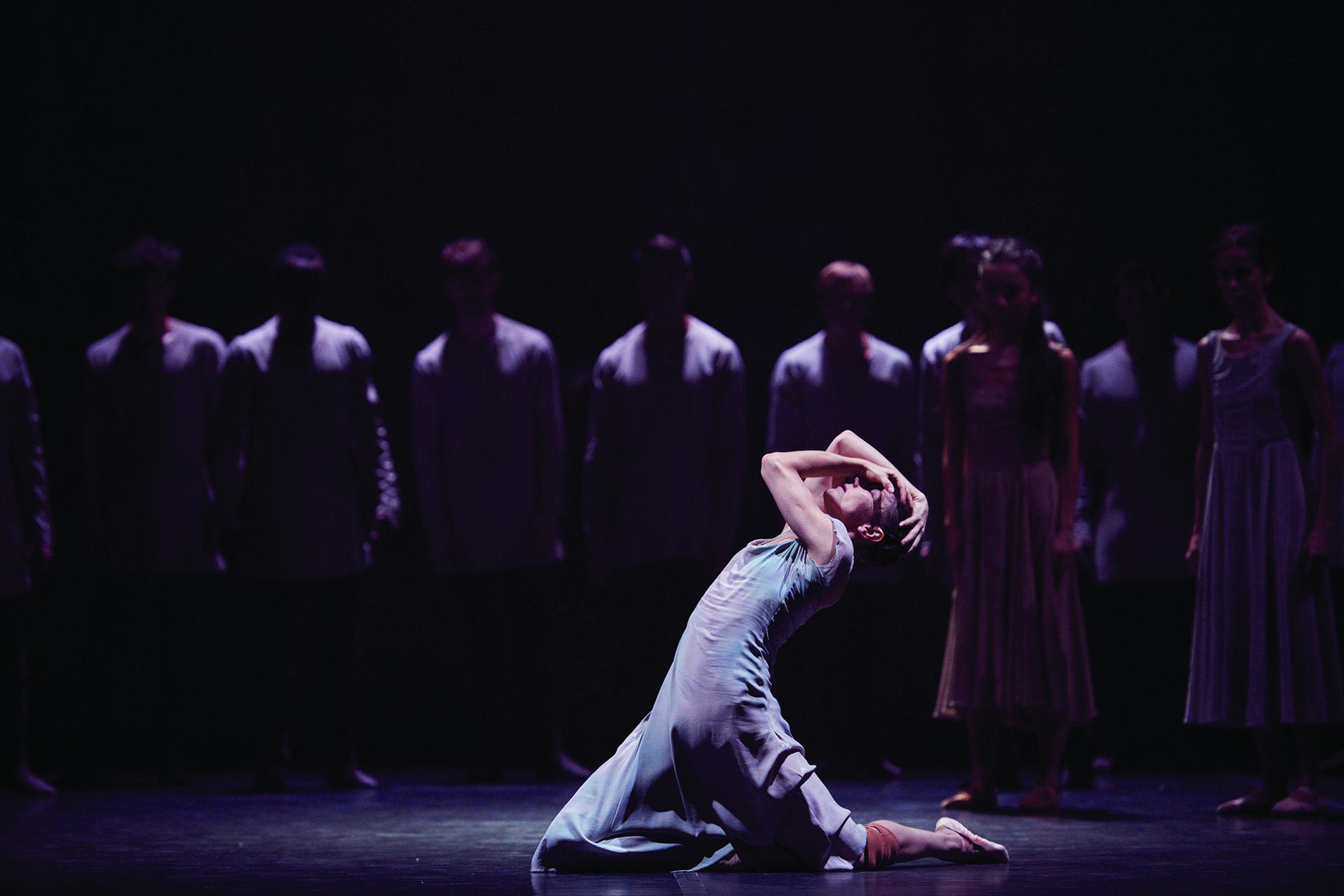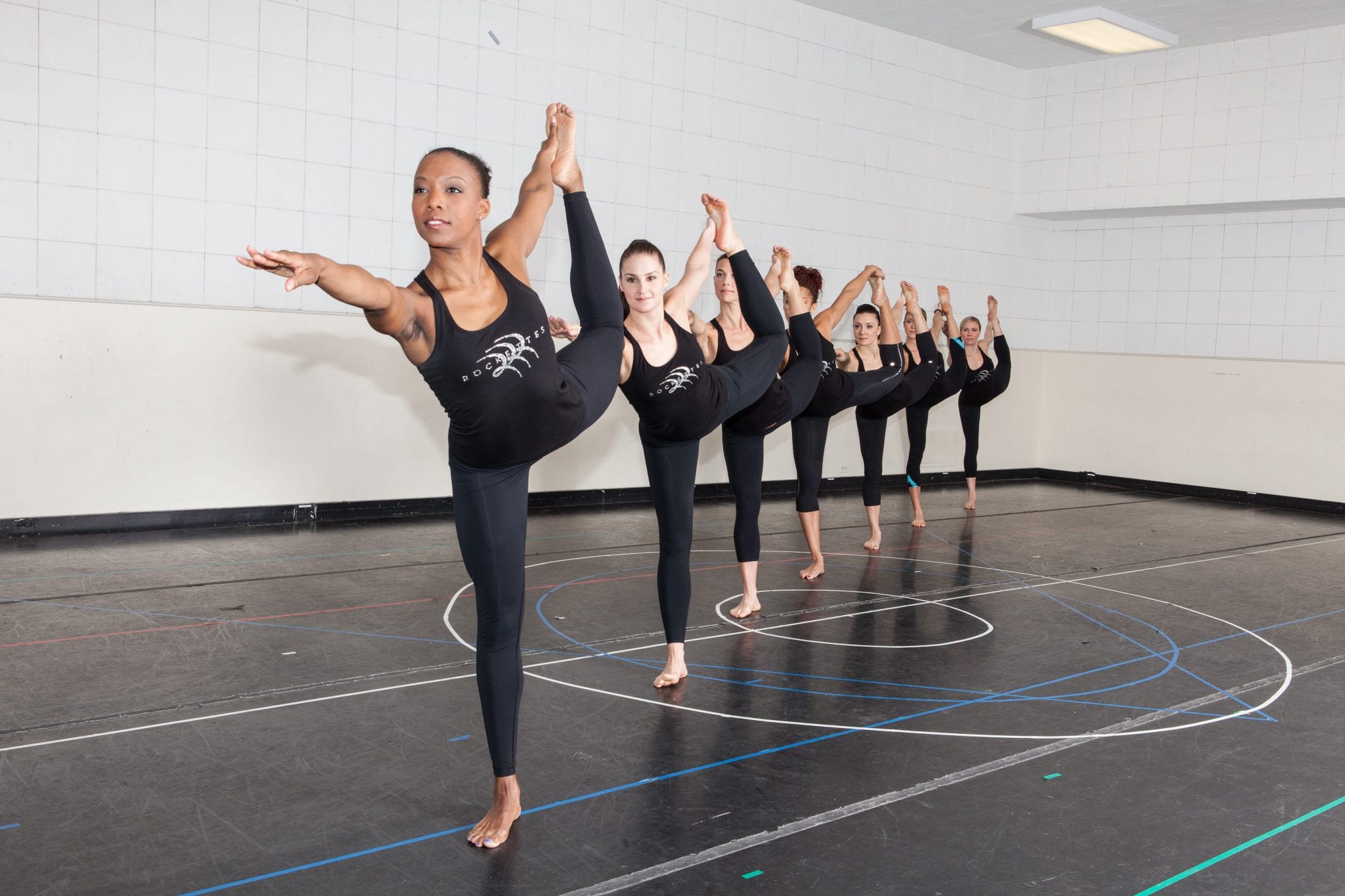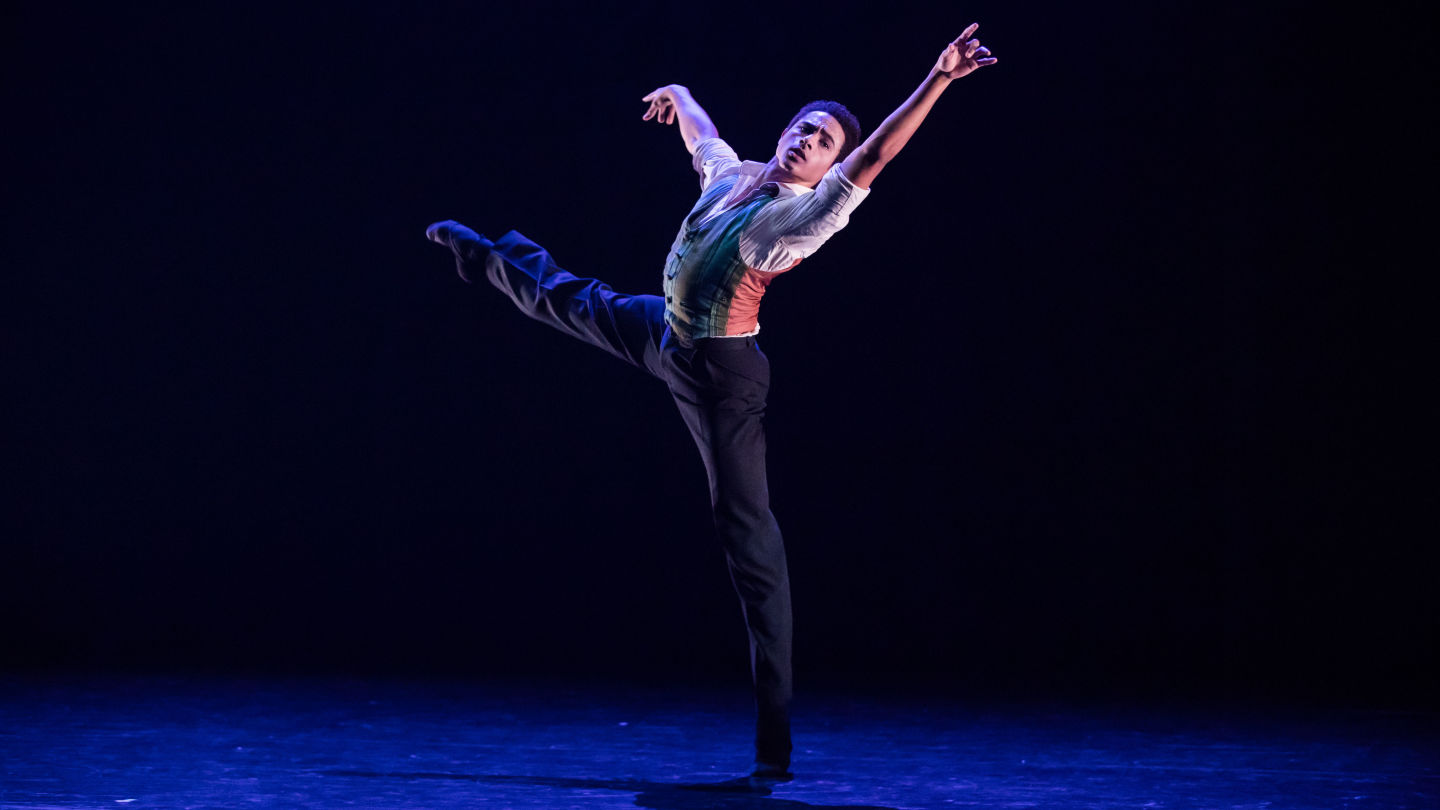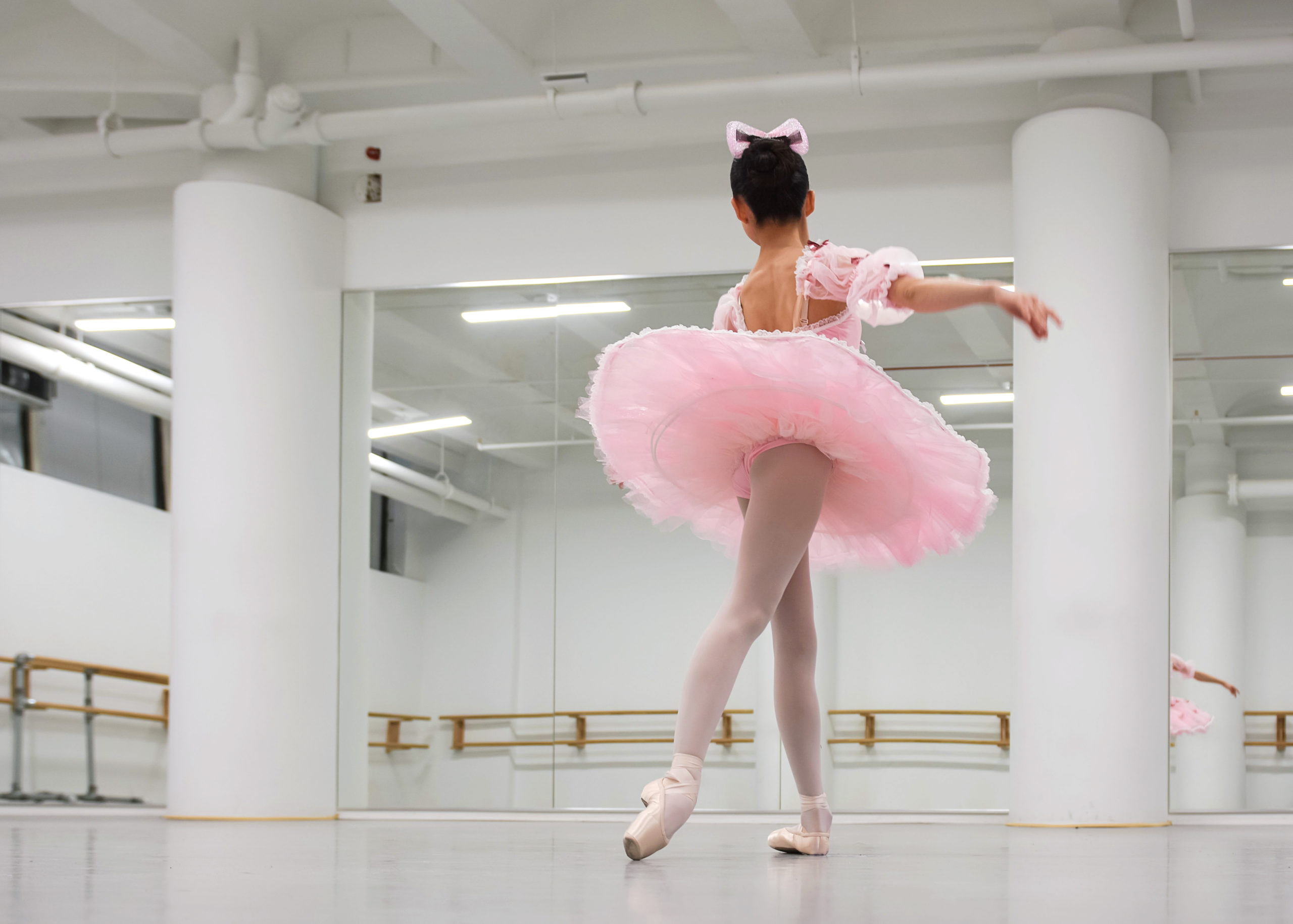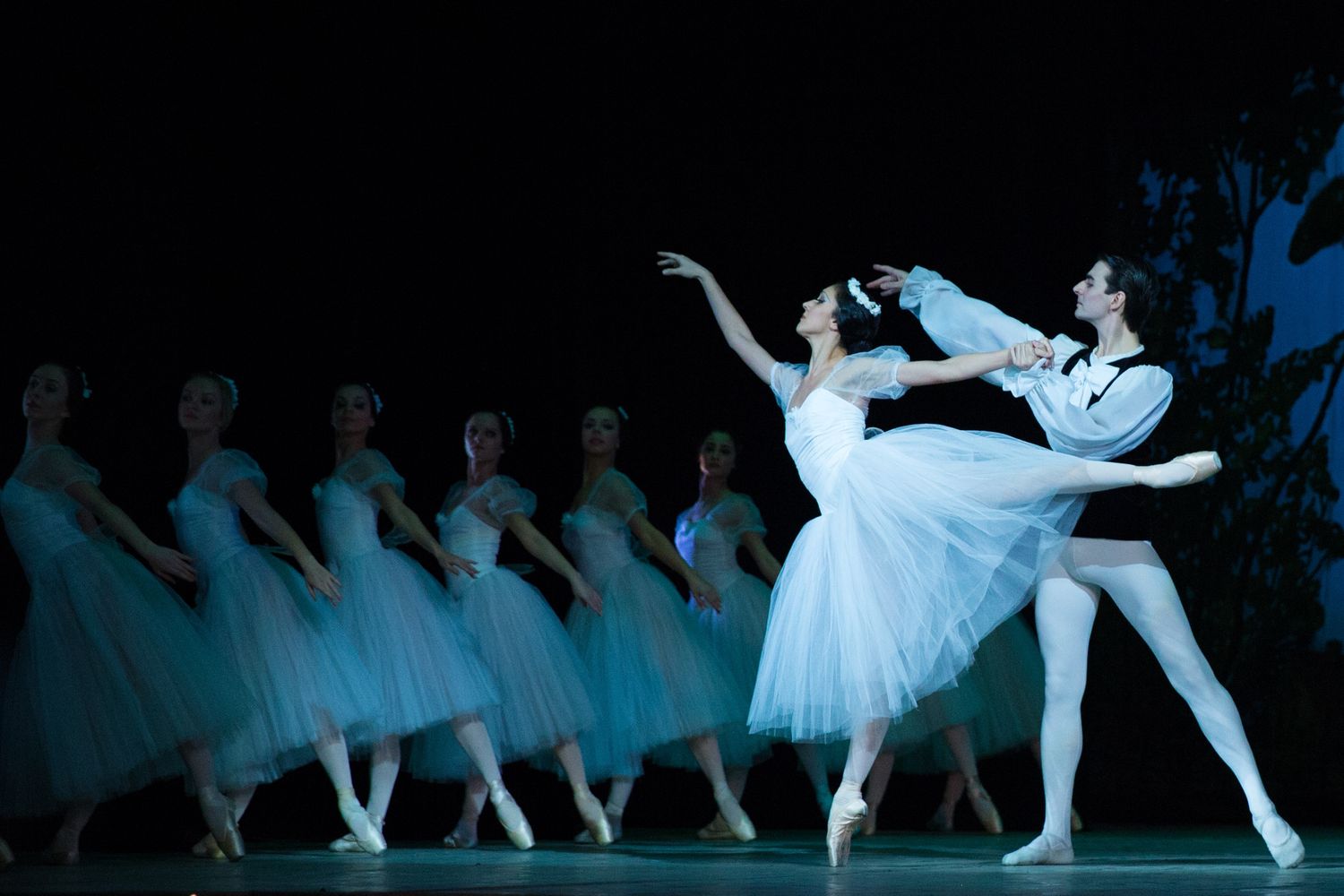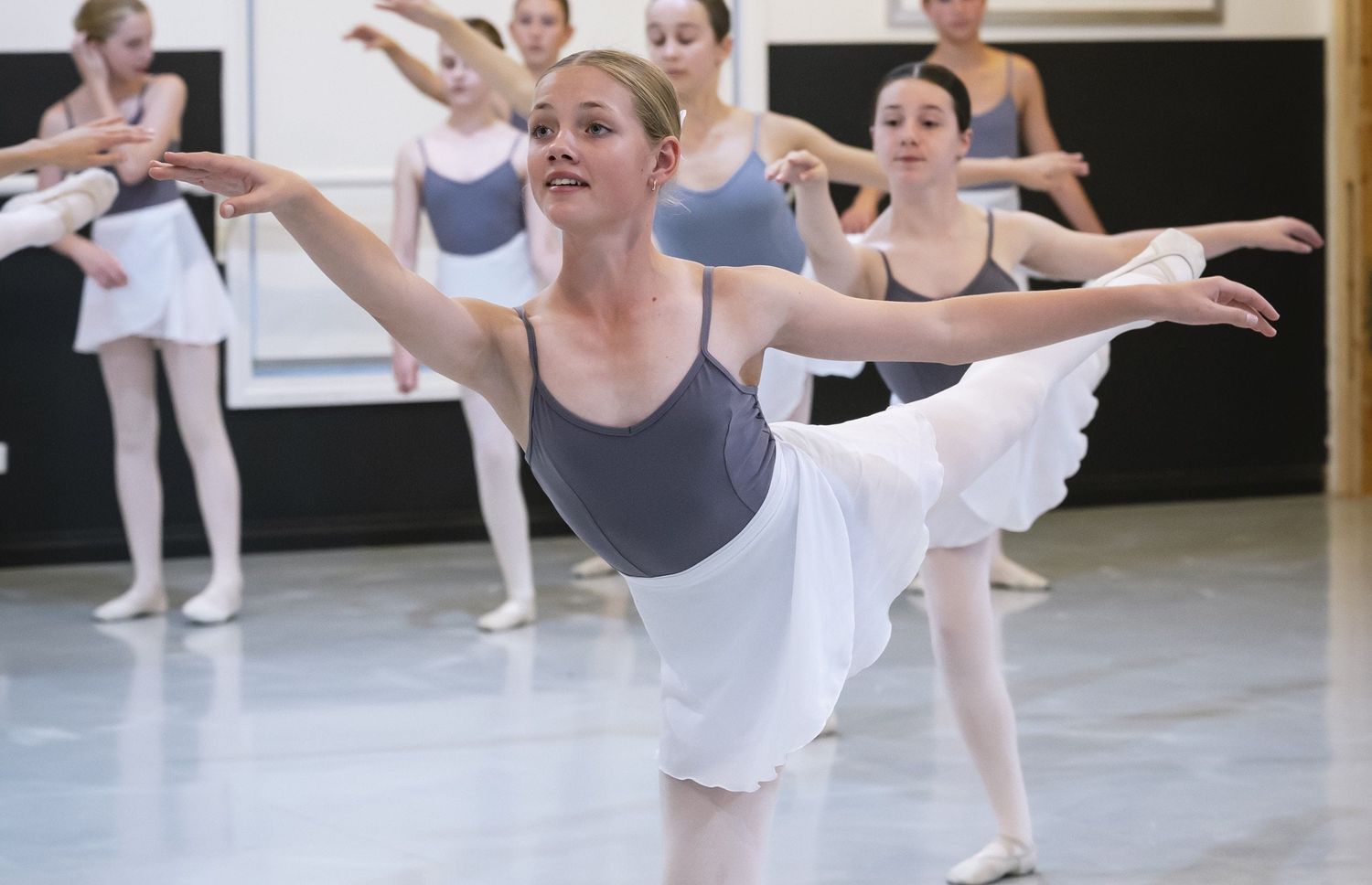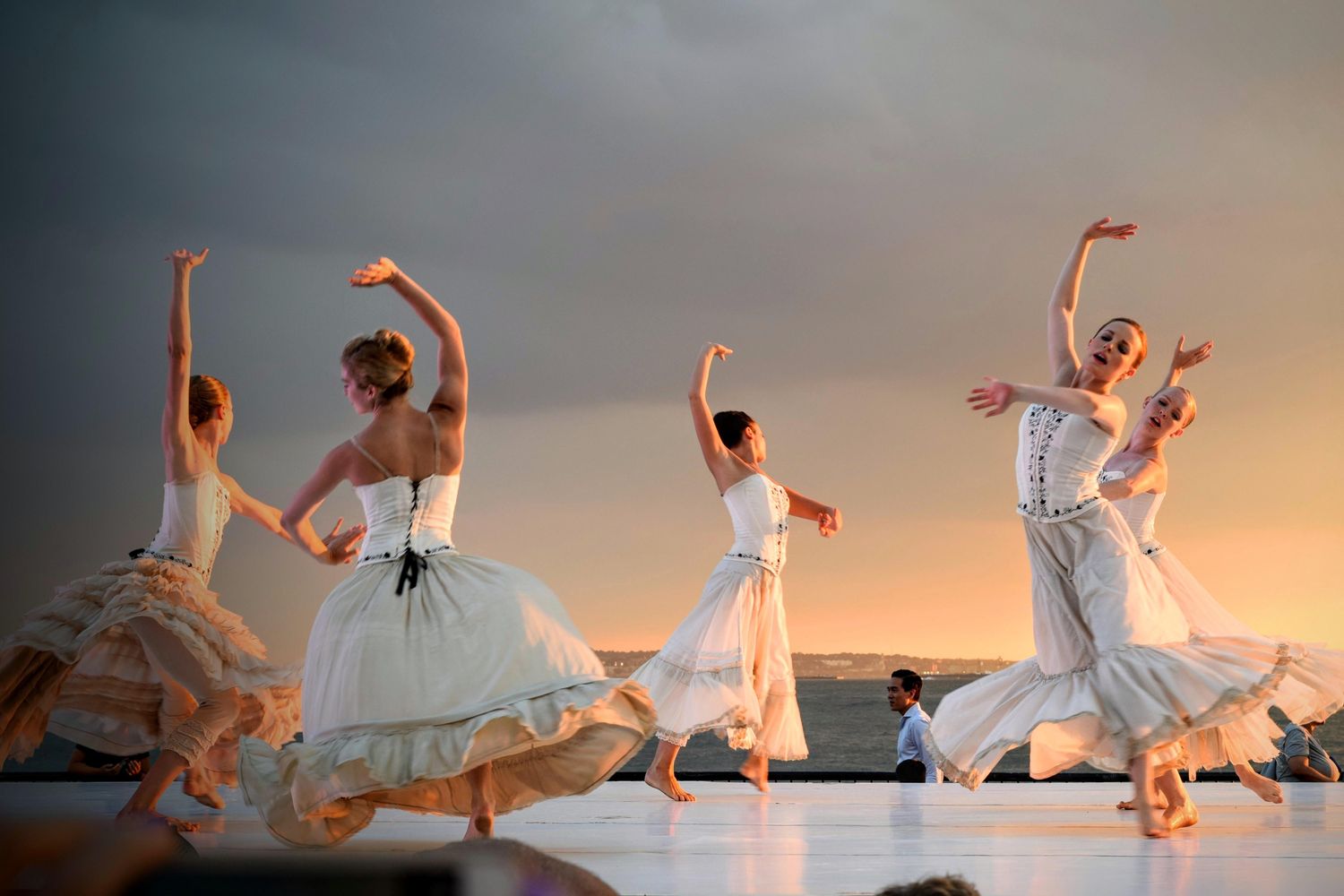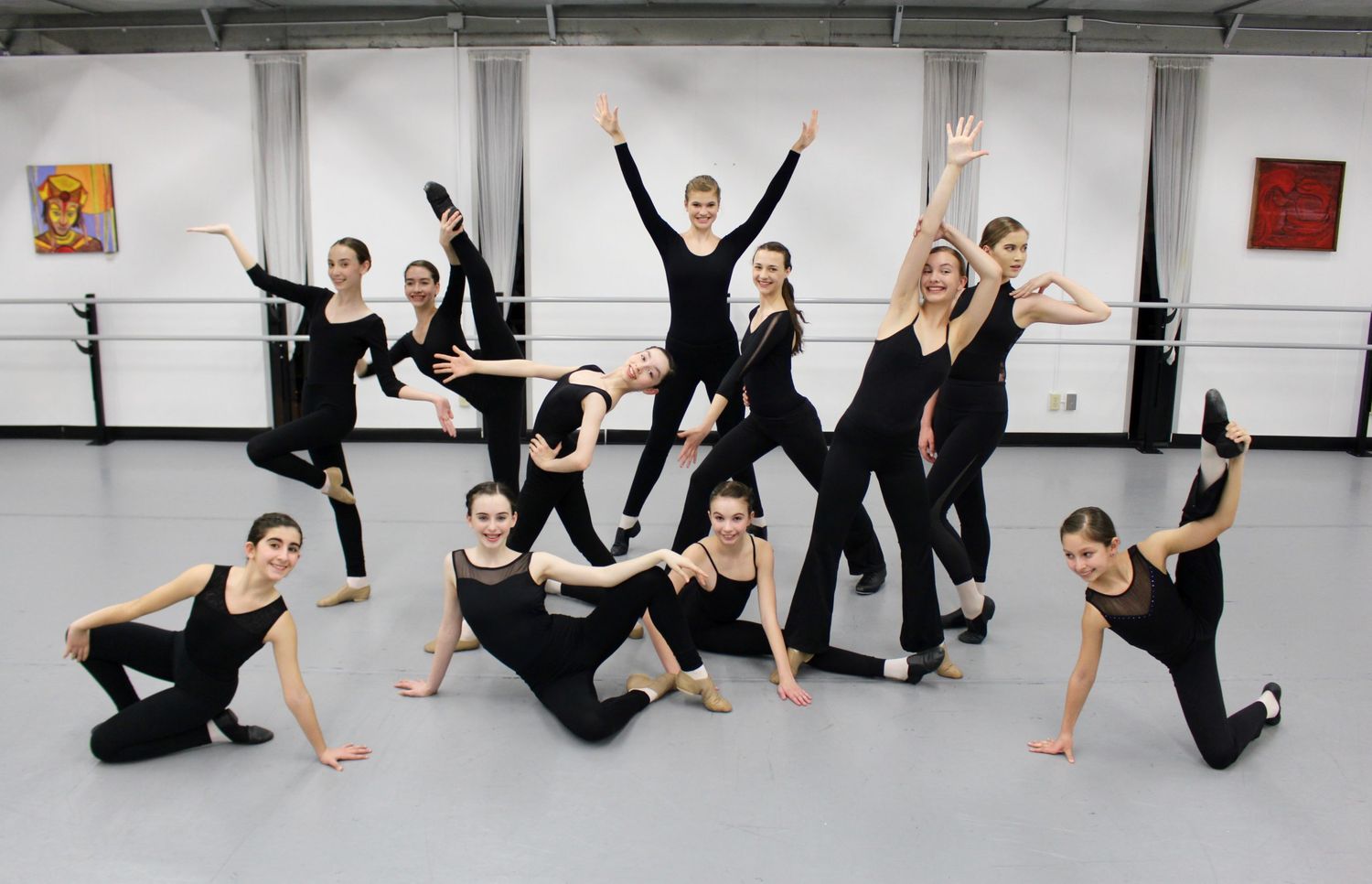Home>Events & Info>Ballet>How To Prepare Feet For Ballet
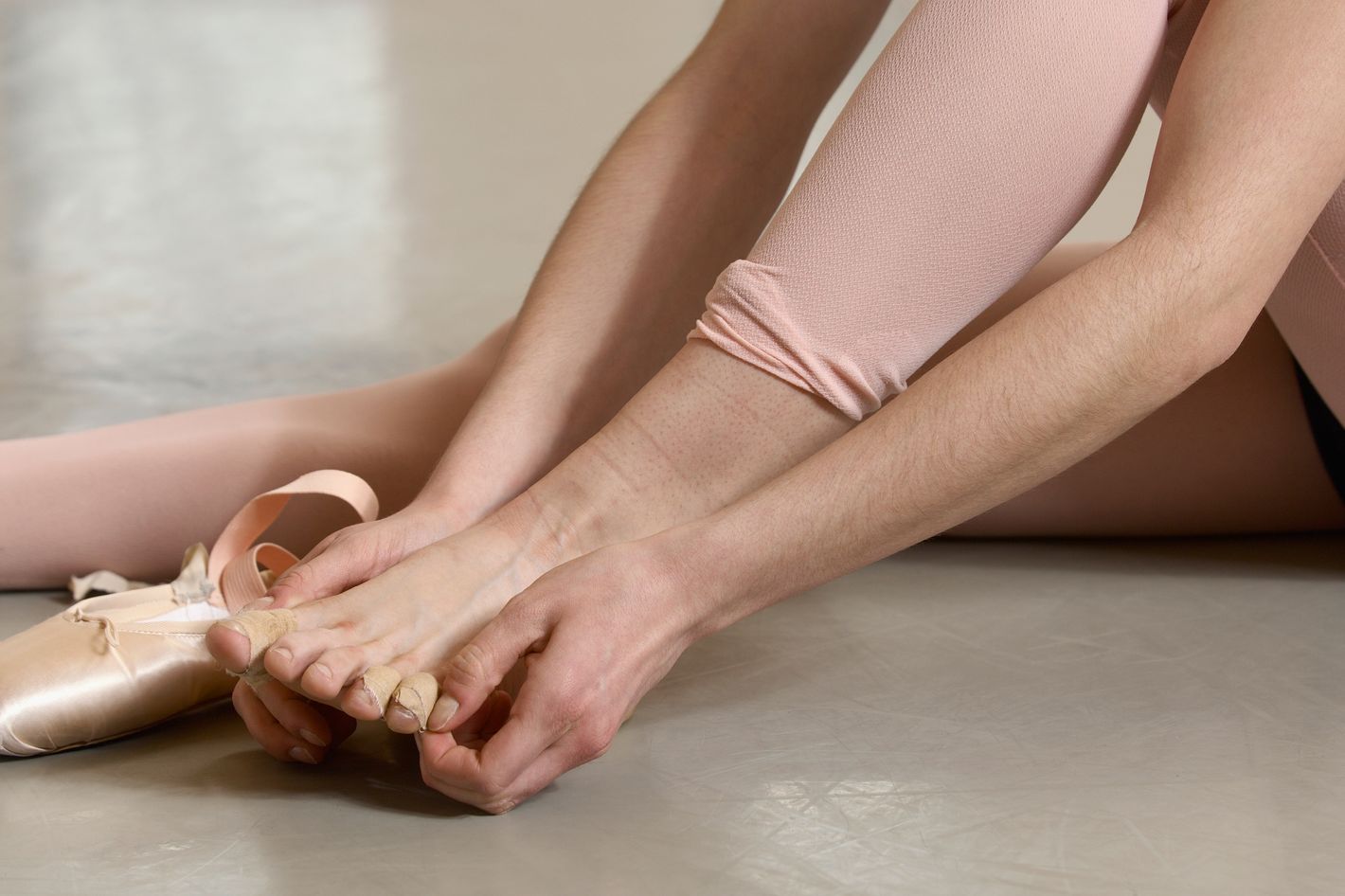

Ballet
How To Prepare Feet For Ballet
Modified: January 22, 2024
Learn how to prepare your feet for ballet with our expert tips and techniques. Enhance your flexibility and strength to excel in your ballet training and performances.
(Many of the links in this article redirect to a specific reviewed product. Your purchase of these products through affiliate links helps to generate commission for AudioLover.com, at no extra cost. Learn more)
Table of Contents
Introduction
Ballet is a beautiful and demanding art form that showcases grace, precision, and strength. One of the most essential aspects of ballet is having strong and well-prepared feet. As a ballet dancer, your feet are your primary tools, and it is crucial to take care of them to ensure optimal performance and prevent injuries.
In this article, we will explore the importance of preparing your feet for ballet and provide you with practical tips on how to do so. From choosing the right ballet shoes to engaging in strengthening and stretching exercises, maintaining proper foot hygiene, and preventing injuries, we will cover it all to help you achieve the best possible results in your ballet practice.
Whether you are a beginner or an experienced ballet dancer, taking care of your feet should be a priority. By following the guidelines and techniques described in this article, you can improve your technique, reduce the risk of foot-related injuries, and enhance your overall ballet experience.
So, let’s jump right in and begin our journey towards preparing your feet for ballet!
Importance of Preparing Feet for Ballet
When it comes to ballet, feet play a vital role in executing movements and maintaining proper form. That’s why preparing your feet for ballet is of utmost importance. Here’s why:
- Flexibility: Ballet requires a wide range of movement, from pointing and flexing the feet to executing intricate footwork. By properly preparing your feet, you can improve their flexibility, allowing you to achieve that desired pointed foot position and execute movements with grace and ease.
- Strength: Ballet demands a high level of foot and ankle strength. Strengthening the muscles in your feet not only allows you to execute movements more powerfully but also helps prevent injuries. With strong feet, you can properly support your body weight, maintain proper alignment, and execute turns and jumps smoothly.
- Balance and Stability: Ballet requires excellent balance and stability. By preparing your feet, you can improve your proprioception, which is your body’s awareness of its position in space. This leads to better balance and stability, allowing you to execute challenging movements and maintain proper form with confidence.
- Injury Prevention: Foot injuries are common in ballet, and often they can be debilitating. Properly preparing your feet through exercises and proper technique can help prevent common ballet injuries such as ankle sprains, stress fractures, and tendonitis. Taking the time to prepare your feet can greatly reduce the risk of these injuries, allowing you to continue dancing and progressing in your ballet practice.
- Artistic Expression: Lastly, preparing your feet for ballet allows you to fully express yourself artistically. Strong and flexible feet enable you to create beautiful lines and shapes with your movements, enhancing the overall aesthetic quality of your dance.
Overall, preparing your feet for ballet is crucial for optimizing performance, preventing injuries, and experiencing the joy of ballet to its fullest. By focusing on flexibility, strength, balance, and injury prevention, you are setting yourself up for success in your ballet journey.
Choosing the Right Ballet Shoes
Choosing the right ballet shoes is essential for both comfort and performance. Here are some factors to consider when selecting your ballet shoes:
- Fit: The most important aspect of ballet shoes is the fit. They should hug your feet snugly, but not be too tight or constricting. A proper fit ensures optimal support and flexibility. Make sure to try on different sizes and styles to find the one that suits your feet best.
- Type: There are two main types of ballet shoes: ballet slippers and pointe shoes. Ballet slippers are soft, lightweight shoes that allow for flexibility and articulation of the foot. Pointe shoes, on the other hand, are for experienced dancers who have developed sufficient strength in their feet and ankles for dancing on the tips of their toes. Choose the appropriate type based on your skill level.
- Material: Ballet shoes are typically made of leather, canvas, or satin. Leather shoes provide durability and mold to the shape of your feet over time. Canvas shoes offer breathability and are often preferred by dancers who sweat excessively. Satin shoes are commonly used for performances and have a more elegant appearance.
- Sole: The sole of the ballet shoe should be flexible, allowing your foot to arch and point easily. It should also provide enough traction to prevent slipping, while still allowing for smooth gliding and turning on the floor.
- Elastic and Drawstrings: Elastic bands and drawstrings are used to secure the ballet shoes on your feet. Make sure the elastic bands are snug but not too tight around your arch, and the drawstrings are adjusted to provide a comfortable fit. Properly secured shoes prevent slips and allow for better control and stability.
Remember that each dancer’s feet are unique, so what works for one person may not work for another. Take the time to try on different brands and styles to find the perfect ballet shoe that suits your feet and supports you throughout your ballet practice.
Strengthening and Stretching Exercises for Feet
Strengthening and stretching your feet is crucial for developing the necessary strength, flexibility, and mobility required for ballet. Here are some exercises to incorporate into your regular practice:
- Doming: Sit on a chair or the floor with your feet flat on the ground. Press the balls of your feet into the floor while keeping your toes relaxed and lifted. This exercise strengthens the arches of your feet.
- Theraband Flex and Point: Sit with your legs extended in front of you and loop a theraband around the balls of your feet. Holding onto the ends of the theraband, flex your feet against the resistance, then point your feet, focusing on lengthening through the toes. This exercise targets the muscles in the feet and calves.
- Ankle Circles: Stand or sit with your feet flat on the ground. Lift one foot off the floor and rotate the ankle in a circular motion, moving clockwise and then counterclockwise. This exercise helps improve ankle mobility and strength.
- Towel Scrunches: Place a small towel on the floor and stand on it barefoot. Using your toes, scrunch up the towel towards you, then release. Repeat for several repetitions. This exercise targets the muscles in the toes and helps improve their strength and dexterity.
- Arch Stretches: Sit on the floor with your legs extended in front of you. Cross one foot over the opposite thigh and gently pull your toes back towards your body, feeling a stretch in the arch of your foot. Hold for 30 seconds, then switch sides. This stretch helps improve flexibility and lengthen the arches.
Incorporate these exercises into your warm-up routine or dedicate specific time during your practice sessions to focus on foot strengthening and stretching. Consistency is key, so aim to perform these exercises regularly to see improvements in your foot strength and flexibility over time.
Remember to listen to your body and never force any movements or stretches that cause pain. If you experience any discomfort or have specific foot concerns, it is recommended to consult with a professional, such as a physical therapist or ballet instructor, who can provide personalized guidance and exercises.
Proper Foot Hygiene
Maintaining proper foot hygiene is essential for ballet dancers to keep their feet healthy and free from infections. Here are some tips to incorporate into your foot care routine:
- Keep Feet Clean and Dry: Wash your feet daily with mild soap and warm water. Pay attention to the areas between your toes and thoroughly dry your feet afterwards. Moisture can promote the growth of bacteria and fungi, leading to conditions such as athlete’s foot.
- Wear Fresh Socks: Change your socks or tights regularly, especially after intense workouts or performances. Opt for moisture-wicking materials to help keep your feet dry and prevent the buildup of bacteria and odor.
- Trim Nails Properly: Trim your toenails straight across and avoid cutting too close to the skin. This helps prevent ingrown toenails, which can be painful and lead to infections.
- Avoid Walking Barefoot in Public Areas: Protect your feet from potential infections by wearing flip-flops or shower shoes in public places like locker rooms, showers, and communal areas.
- Use Foot Powder or Anti-Fungal Spray: To keep your feet dry and prevent fungal infections, consider using foot powder or anti-fungal spray before putting on your ballet shoes. This can help absorb moisture and protect your feet from common foot problems.
- Give Your Feet a Break: Ballet dancers often spend hours on their feet, which can lead to excessive pressure and strain. Incorporate regular rest periods to give your feet a break and alleviate any potential overuse injuries.
- Seek Professional Help: If you notice any signs of foot issues such as persistent pain, redness, swelling, or unusual skin changes, don’t hesitate to consult with a healthcare professional or podiatrist. They can provide appropriate diagnosis and treatment for any foot conditions.
By following these hygiene practices, you can maintain healthy feet and reduce the risk of infections or other foot-related issues that may interfere with your ballet practice.
Remember that every dancer’s feet are unique, so it may take some trial and error to find the hygiene routine that works best for you. Pay attention to your feet, and if you have any concerns, seek guidance from a healthcare professional for personalized advice and recommendations.
Preventing and Treating Foot Injuries
Foot injuries are common in ballet due to the repetitive and demanding nature of the art form. However, there are steps you can take to prevent injuries and effectively treat them if they do occur. Here are some key strategies:
- Warm Up Properly: Always start your ballet practice with a thorough warm-up routine that includes gentle stretches and exercises to prepare your feet for the demands of dancing. This helps to increase blood flow to the muscles and joints, reducing the risk of injuries.
- Listen to Your Body: Pay attention to any pain, discomfort, or signs of strain in your feet. Pushing through pain can lead to further injury. Rest when needed, and consult with a healthcare professional if you experience persistent pain or swelling.
- Use Proper Technique: Proper technique is crucial for preventing foot injuries in ballet. Focus on maintaining proper alignment, distributing your weight evenly, and engaging the appropriate muscles during movements. Utilize the guidance of a qualified ballet instructor to ensure you are executing movements correctly.
- Gradually Increase Intensity: Avoid sudden increases in training volume or intensity. Gradually build up your strength, flexibility, and endurance to prevent overuse injuries such as stress fractures and tendonitis. Remember to incorporate rest days into your schedule to allow your feet time to recover.
- Wear Supportive Shoes: Invest in high-quality ballet shoes that provide proper support and cushioning. Replace worn-out shoes to maintain optimal support and prevent unnecessary strain on your feet.
- Ice and Elevate: If you experience swelling or acute pain in your feet, apply ice packs and elevate your feet to reduce inflammation. This can help alleviate discomfort and promote healing.
- Seek Professional Help: If you suspect a foot injury or are experiencing persistent pain, it is essential to consult with a healthcare professional, such as a sports medicine specialist or a physical therapist. They can provide a proper diagnosis, create a personalized treatment plan, and guide you through rehabilitation exercises to aid in your recovery.
Remember, prevention is key when it comes to foot injuries. Taking proactive measures, such as warming up, using proper technique, and listening to your body, can significantly minimize the risk of injuries and allow you to enjoy ballet with healthy feet. However, if an injury does occur, proper treatment and rehabilitation are crucial to ensure a full recovery and prevent long-term issues.
Tips for Maintaining Healthy Feet in Ballet
Maintaining healthy feet is essential for ballet dancers to perform at their best and minimize the risk of injuries. Here are some tips to help you keep your feet in top condition:
- Perform Foot Stretches and Exercises Regularly: Incorporate specific foot stretches and exercises into your daily routine to improve flexibility, strength, and mobility. This will help prevent tight muscles, promote proper alignment, and enhance your overall technique.
- Take Care of Your Pointe Shoes: If you wear pointe shoes, be sure to properly care for them. Allow them to dry completely after each use to prevent moisture build-up and odor. Replace the elastic and ribbon as needed to ensure optimum support.
- Massage and Self-Care: Give your feet some love by massaging them regularly. Use a tennis ball or a foot roller to roll out any tension and stimulate blood flow. You can also soak your feet in warm water with epsom salt for relaxation and to alleviate soreness.
- Listen to Your Feet: Pay attention to any discomfort, pain, or changes in your feet. If something doesn’t feel right, take a break, and consult with a healthcare professional. Ignoring foot issues can lead to chronic problems that may affect your dancing in the long run.
- Use Toe Spacers: Toe spacers can help realign and separate your toes. They can be especially beneficial if you experience bunions or overlapping toes. Toe spacers promote proper foot alignment and can help prevent the development of foot deformities.
- Alternate Your Shoes: Avoid wearing the same pair of ballet shoes every day. Allow them to air out and dry thoroughly between uses. This helps prevent the growth of bacteria and fungi, reducing the risk of foot infections.
- Perform Ankle Strengthening Exercises: Strong ankles are crucial for stability and balance in ballet. Incorporate ankle strengthening exercises into your routine to build strength and prevent ankle injuries. Resistance band exercises and calf raises are effective for this purpose.
- Monitor Your Foot Alignment: Be mindful of your foot alignment during ballet movements. Avoid rolling onto the outer edges of your feet or excessively pronating. Proper alignment helps prevent injuries and promotes efficient movement.
By following these tips, you can maintain healthy and strong feet throughout your ballet career. Remember that every dancer’s feet are unique, so listen to your body and adjust your routine accordingly. Incorporate proper foot care into your daily life to keep your feet in optimal condition and continue to pursue your passion for ballet.
Conclusion
In the world of ballet, your feet are your foundation and the key to executing movements with precision and grace. By understanding the importance of preparing your feet for ballet and implementing the tips and techniques discussed in this article, you can enhance your performance, reduce the risk of injuries, and maintain healthy feet.
Choosing the right ballet shoes, engaging in strengthening and stretching exercises, practicing proper foot hygiene, and taking steps to prevent and treat foot injuries are all essential aspects of foot care in ballet. Remember to listen to your body, seek professional guidance when needed, and incorporate regular self-care practices to keep your feet in optimal condition.
With consistent effort and attention to foot care, you can improve your technique, enhance your artistry, and enjoy the beautiful world of ballet to its fullest. Prioritize the health and well-being of your feet, and they will support you in your journey of self-expression and mastery of this exquisite art form.
So, lace up your ballet shoes, stretch those muscles, and let your well-prepared feet guide you towards your ballet aspirations.

